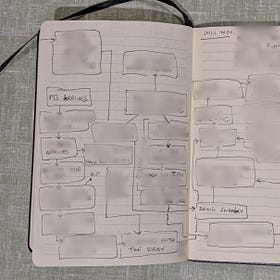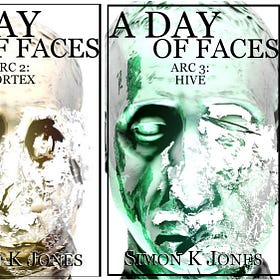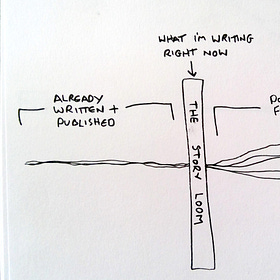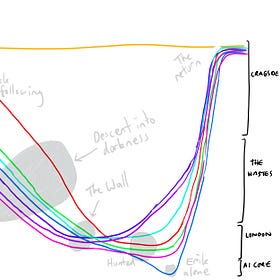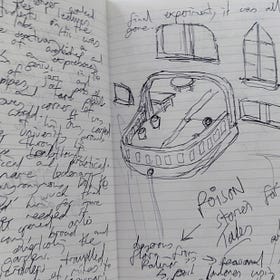Planning & plotting
When you write serial fiction it’s important to know where you’re going. Planning ahead is vital, even if you’re more of a seat-of-your-pants writer. I’ve put a lot of thought into how to do this without losing your excitement for the story.
How to construct a story
Today’s video is about how to build a story from the key components: world building, themes, characters and plot. Which is quite a big topic, and clearly not something one should try to cover in a 25 minute video. Yet here we are.
Why does planning work so well on paper?
I’m in the final season of Tales from the Triverse, the weekly serial I’ve been writing and publishing since 2021. That’s three and a half years and 340,000 words. It’s a big project, and I’m acutely aware of the tiny target I need to hit if I’m going to land the ending.
Writing from a limited, subjective point of view
Choosing the point of view for your story is the big make-or-break decision. You have to figure this out ahead of time, because it directly affects every aspect of the text. It’s not really something you can decide upon while writing.
Pacing, monotony & cliffhangers
The movies I remember are the ones that are more varied in their pacing. Terminator 2 is improved immeasurably by the sequence in the desert, when the tension and action drops away, focusing instead on Sarah pondering the role of the father figure. Die Hard
Foreshadowing in online serials
As I close in on the finale of my weekly serial Tales from the Triverse, I’m thinking a lot about foreshadowing.
Choosing the right structure for a story
My first encounter with non-linear storytelling as a kid was probably Back to the Future Part II. I was about 9 years old. That’s probably cheating, given that it’s a time travel story.
Sneaky stories that wear disguises
Storytelling often leans heavily on formula and expectation. Language itself is rules-based, after all, and breaking too many of those rules can make a text difficult for readers.
The Story Loom
I stumbled upon an interesting discussion over on Notes, started by James Dietz, about the nature of planning. James muses on how an outline can often be wonderfully succinct and impactful due to its reduced nature:
Write about the things that matter to you
As a kid I always wondered why the stories I wrote felt flimsy and inconsequential. I had cool characters and fun plots, but they weren’t coming alive. It took me an embarrassingly long time to figure out that it was due to a lack of thematic richness.
Visualising your plot threads
I had a strange compulsion about a week ago. I wanted to visualise my books’ plots. This might be useful, I thought, or provide some interesting insights into my storytelling techniques. Or it might just be kinda cool.
Planning your story's big finale
The first chapter of Tales from the Triverse was posted on this newsletter on 24 September 2021. New chapters have gone out every week since then, and the book currently sits at just over 150,000 words.
Structuring serial fiction on Substack
Something of a nuts-and-bolts newsletter today. I’m still in the tail end of recovering from having covid last week, with my brain feeling like it’s only operating at half speed. Hopefully what follows a) makes sense and b) is useful.
Structuring your writing
It’s been a busy couple of weeks. Yesterday I had the pleasure of hosting a workshop by crime writer ES Thomson as part of the Noirwich Crime Writing Festival which was a delight. There are many perks to working at the National Centre for Writing, not least of which is sitting in on workshops. ES challenged the participants to a series of exercises and …



